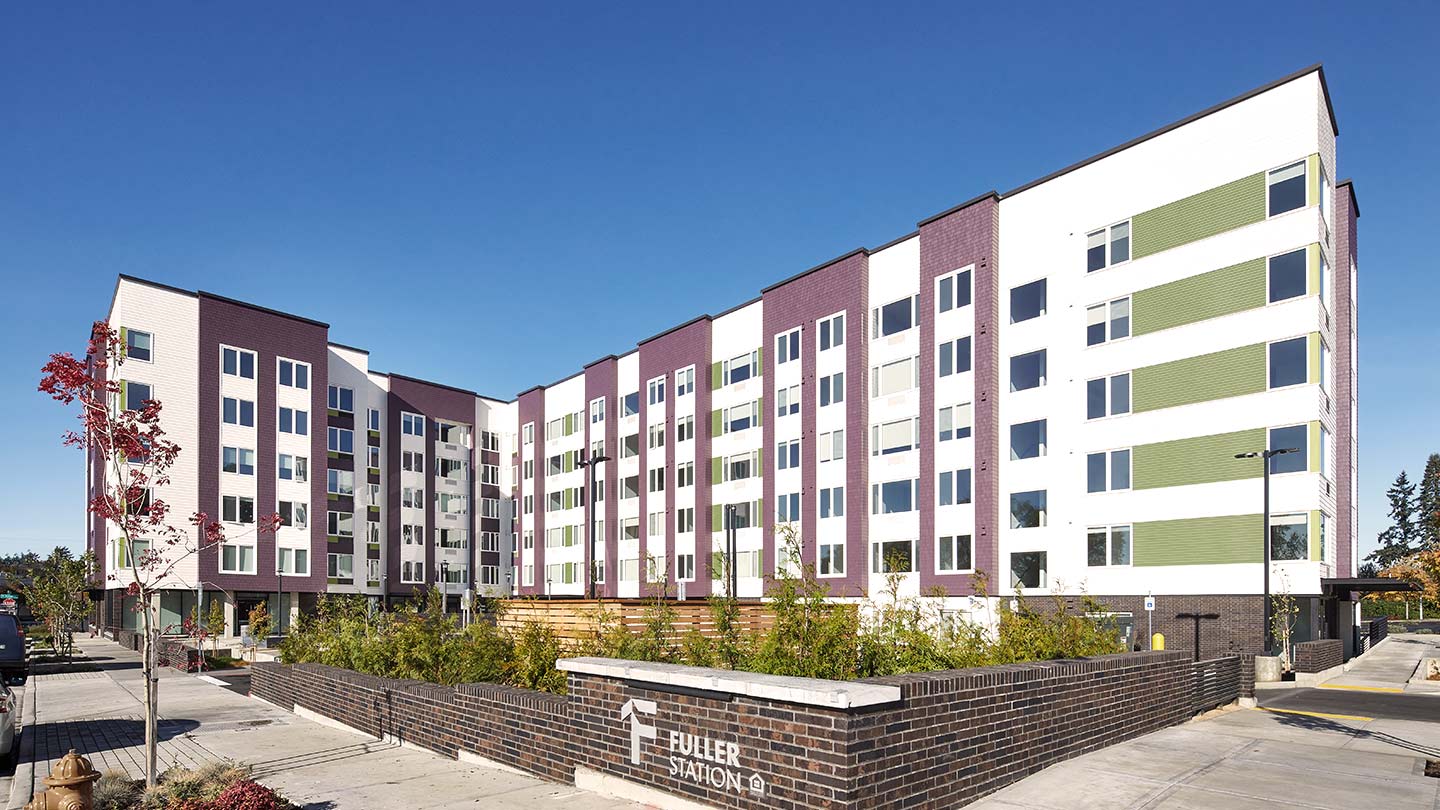From startups to legacy brands, you're making your mark. We're here to help.
-
Innovation Economy
Fueling the success of early-stage startups, venture-backed and high-growth companies.
-
Midsize Businesses
Keep your company growing with custom banking solutions for middle market businesses and specialized industries.
-
Large Corporations
Innovative banking solutions tailored to corporations and specialized industries.
-
Commercial Real Estate
Capitalize on opportunities and prepare for challenges throughout the real estate cycle.
-
Impact Banking & Advisory
When our communities succeed, we all succeed. Local businesses, organizations and community institutions need capital, expertise and connections to thrive.
-
International Banking
Power your business' global growth and operations at every stage.
Key Links
Prepare for future growth with customized loan services, succession planning and capital for business equipment.
-
Asset Based Lending
Enhance your liquidity and gain the flexibility to capitalize on growth opportunities.
-
Equipment Financing
Maximize working capital with flexible equipment and technology financing.
-
Trade & Working Capital
Experience our market-leading supply chain finance solutions that help buyers and suppliers meet their working capital, risk mitigation and cash flow objectives.
-
Syndicated Financing
Leverage customized loan syndication services from a dedicated resource.
-
Commercial Real Estate
Capitalize on opportunities and prepare for challenges throughout the real estate cycle.
-
Employee Stock Ownership Plans
Plan for your business’s future—and your employees’ futures too—with objective advice and financing.
Key Links
Serving the world's largest corporate clients and institutional investors, we support the entire investment cycle with market-leading research, analytics, execution and investor services.
-
Institutional Investors
Putting your long-tenured investment teams on the line to earn the trust of institutional investors.
-
Markets
Direct access to market leading liquidity harnessed through world-class research, tools, data and analytics.
-
Prime Services
Helping hedge funds, asset managers and institutional investors meet the demands of a rapidly evolving market.
-
Global Research
Leveraging cutting-edge technology and innovative tools to bring clients industry-leading analysis and investment advice.
-
Securities Services Solutions
Helping institutional investors, traditional and alternative asset and fund managers, broker dealers and equity issuers meet the demands of changing markets.
Key Links
Providing investment banking solutions, including mergers and acquisitions, capital raising and risk management, for a broad range of corporations, institutions and governments.
-
Center for Carbon Transition
J.P. Morgan’s center of excellence that provides clients the data and firmwide expertise needed to navigate the challenges of transitioning to a low-carbon future.
-
Corporate Finance Advisory
Corporate Finance Advisory (“CFA”) is a global, multi-disciplinary solutions team specializing in structured M&A and capital markets. Learn more.
-
Development Finance Institution
Financing opportunities with anticipated development impact in emerging economies.
-
Sustainable Solutions
Offering ESG-related advisory and coordinating the firm's EMEA coverage of clients in emerging green economy sectors.
-
Mergers and Acquisitions
Bespoke M&A solutions on a global scale.
-
Capital Markets
Holistic coverage across capital markets.
Your partner for commerce, receivables, cross-currency, working capital, blockchain, liquidity and more.
Key Links
A uniquely elevated private banking experience shaped around you.
-
Banking
We have extensive personal and business banking resources that are fine-tuned to your specific needs.
-
Investing
We deliver tailored investing guidance and access to unique investment opportunities from world-class specialists.
-
Lending
We take a strategic approach to lending, working with you to craft the right financing solutions matched to your goals.
-
Planning
No matter where you are in your life, or how complex your needs might be, we’re ready to provide a tailored approach to helping your reach your goals.
Whether you want to invest on your own or work with an advisor to design a personalized investment strategy, we have opportunities for every investor.
-
Invest on your own
Unlimited $0 commission-free online stock, ETF and options trades with access to powerful tools to research, trade and manage your investments.
-
Work with our advisors
When you work with our advisors, you'll get a personalized financial strategy and investment portfolio built around your unique goals-backed by our industry-leading expertise.
-
Expertise for Substantial Wealth
Our Wealth Advisors & Wealth Partners leverage their experience and robust firm resources to deliver highly-personalized, comprehensive solutions across Banking, Lending, Investing, and Wealth Planning.
Explore a variety of insights.
Key Links
Insights by Topic
Explore a variety of insights organized by different topics.
Key Links
Insights by Type
Explore a variety of insights organized by different types of content and media.
Key Links
We aim to be the most respected financial services firm in the world, serving corporations and individuals in more than 100 countries.
Key Links
- Insights
- Real Estate
- Agency Lending
- How defeasance works in commercial real estate

3 min read
Selling or refinancing a multifamily property before its loan matures often involves paying a prepayment premium such as yield maintenance. Defeasance is an alternative that can be an attractive option depending on a commercial real estate investor’s individual situation and market conditions. But multifamily loan defeasance is a more complex process than paying a prepayment premium.
Learn more about how defeasance works and how it compares with yield maintenance.
What is defeasance?
A defeasance clause is a provision in a commercial real estate loan agreement that lets a borrower replace the asset securing the loan with substitute collateral—typically a portfolio of U.S. government bonds—that provides similar cash flows over the loan’s remaining term.
Defeasance is often used in real estate transactions involving securitized loans, such as agency loans. It plays a similar role to a prepayment premium in that it compensates the lender—or, with a securitized loan, the lender and security investor—for expected interest income lost when a loan is paid early.
How defeasance works
A multifamily owner swaps the property that originally secured the loan for replacement collateral designed to yield enough cash flow to cover the remaining mortgage payments. The collateral often consists of fixed-rate government-backed bonds, giving the lender confidence the bonds will generate the required cash flow.
The owner transfers the substitute collateral to an entity known as a successor borrower, which assumes the debt obligations so the original property can be released.
Whether defeasance is an option depends on the borrower’s loan agreement. If defeasance is an option, the loan agreement will typically outline requirements, including:
- The type of securities that can be purchased as collateral—for instance, whether the borrower can purchase securities from Fannie Mae and Freddie Mac as an alternative to U.S. Treasury securities
- The process for purchasing securities and whether the borrower can purchase them directly or must work with a third party
- The lock-out period during which defeasance is prohibited
Successfully navigating the process can be complex. Defeasance consultants can help multifamily investors determine the cost of defeasance and execute the transaction correctly.
Defeasance vs. yield maintenance
Defeasance and yield maintenance can be used in situations in which a multifamily investor wants to exit a loan early, but there are key differences:
- Yield maintenance: A borrower paying a loan early pays a premium on top of the remaining principal. The yield maintenance premium is typically the greater of 1% of the principal being repaid or the premium calculated with the following formula:
Yield maintenance premium = present value of remaining mortgage payments * (interest rate – Treasury yield) - Defeasance: The loan remains in place until it matures, so there’s no prepayment premium. Instead, the cost primarily depends on the value of the securities purchased as replacement collateral.
Estimating the cost of defeasance is more complex than calculating a loan’s prepayment premium, and costs vary depending on the interest rate environment and Treasury yields:
- Rising interest rates: Both options tend to cost less when interest rates rise. With defeasance, higher Treasury yields mean borrowers need to purchase fewer securities to generate cash flow to cover the remaining mortgage payments. Higher yields also result in lower yield maintenance premium payments. But if the borrower seeks a new loan, it will be at an elevated interest rate.
- Falling interest rates: The farther Treasury yields drop below the borrower’s interest rate, the larger the prepayment premium. Defeasance also tends to cost more because at lower yields, the borrower would need more Treasury securities to serve as substitute collateral. However, a low interest rate environment could lead to a better rate on a new loan.
Determining which option is more cost-effective depends on the individual borrower’s situation and original loan terms.
Learn how agency lending can help you optimize your multifamily investments.
JPMorgan Chase Bank, N.A. Member FDIC. Visit jpmorgan.com/cb-disclaimer for disclosures and disclaimers related to this content.
Related insights

Real Estate
Dec 04, 2025
Learn from JPMorgan Chase commercial real estate leaders and stay up to date on the latest industry news and media coverage.

Real Estate
FHFA’s 2026 multifamily volume caps signal strong activity
Dec 02, 2025
The Federal Housing Finance Agency increased agency multifamily loan purchase caps for 2026. It’s a positive sign for financing availability and market activity.

Real Estate
Why CAM charges are important for property managers
Dec 02, 2025
Shared building spaces impact tenants’ satisfaction and the success of your commercial properties. Find out more about the costs to maintain these areas.

2:29 - Real Estate
If these walls could talk: Seattle
Nov 03, 2025
We’ve invested more than $630 million in Seattle affordable housing and community services over the past decade. Discover Community Development Banking’s local impact.

Real Estate
Helping Guardian Real Estate Services grow its impact
Oct 23, 2025
See how J.P. Morgan’s comprehensive banking solutions helped this multifamily developer and manager grow from a regional leader to national scale—including a $497 million milestone deal.

Real Estate
Why your bank’s onboarding and service teams matter
Oct 06, 2025
Understand the role onboarding and service teams play, and how industry expertise can support commercial real estate success.

Real Estate
Investing in libraries, beyond the books
Oct 02, 2025
Investment helps libraries take on a larger community role, offering services like workforce development, technology classes, homework help and more.

Real Estate
How landlords can prepare for natural disasters
Oct 02, 2025
Severe weather events are on the rise. A business resiliency plan can help commercial real estate owners and operators prepare to minimize the impact on renters and properties.
You're now leaving J.P. Morgan
J.P. Morgan’s website and/or mobile terms, privacy and security policies don’t apply to the site or app you're about to visit. Please review its terms, privacy and security policies to see how they apply to you. J.P. Morgan isn’t responsible for (and doesn’t provide) any products, services or content at this third-party site or app, except for products and services that explicitly carry the J.P. Morgan name.